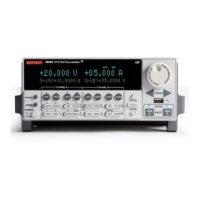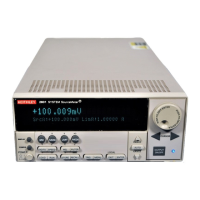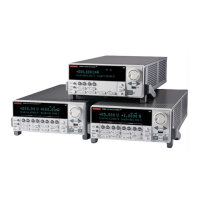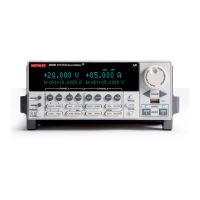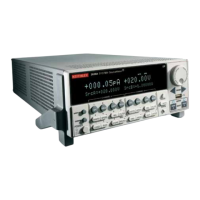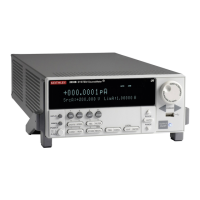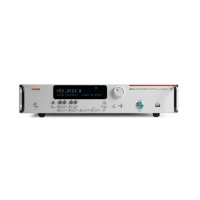2600AS-901-01 Rev. B / September 2008 Return to Section Topics 19-27
Series 2600A System SourceMeter® Instruments Reference Manual Section 19: Remote Commands
bit.set
Function Sets a bit at a given index position.
TSP-Link
accessibility
This function cannot be accessed from a remote TSP-Link node.
Usage value = bit.set(value1, index)
value1 Given number.
index Index position of the bit to be set (1 to 32).
value Returned value of the new number.
Remarks • This function returns value, which is value1 with the indexed bit set. The index must be a
value between 1 and 32. The least significant bit of the given number has an index of 1 and the
most significant bit has an index of 32.
• Any fractional part of value1 will be truncated to make it an integer.
•See Logic and bit operations for more information.
Also see bit.clear, bit.get, bit.getfield, bit.setfield, bit.test, bit.toggle
Example The binary equivalent of decimal 8 is 1000. If the bit at index3 is set to 1, the returned value will
be decimal 12 (binary 1100):
value = bit.set(8, 3)
print(value)
Output: 1.200000e+01
bit.setfield
Function Overwrites a bit field at a given index position.
TSP-Link
accessibility
This function cannot be accessed from a remote TSP-Link node.
Usage value = bit.setfield(value1, index, width, fieldvalue)
value1 The given number.
index Index position of the least significant bit of the field
1 to (33 – width).
width Field width – number of bits in the field; 1 to 24.
fieldvalue Value to write to the field.
value Returned value of the new number.
Remarks • This function returns value, which is value1 with a field of bits overwritten, starting at the given
index position. The index specifies the position of the least significant bit of the given field.
The width bits starting at the given index will be set to the value given by fieldvalue. The
least significant bit in value1 has an index of 1 and the most significant bit has an index of 32.
• Prior to setting the field of bits, any fractional parts of value1 and fieldvalue will be truncated
to make them integers.
• If the fieldvalue is wider than the width, the extra most significant bits of the fieldvalue
will be truncated. For example, assume the width is 4 bits, and the binary value for
fieldwidth is 11110 (5 bits). The most significant bit of fieldwidth will be truncated, and a
binary value of 1110 will be used as the fieldvalue.
•See Logic and bit operations for more information.
Also see bit.clear, bit.get, bit.getfield, bit.set, bit.test, bit.toggle
Example The binary equivalent of decimal 15 is 1111. After overwriting it with a decimal 5 (binary 101) at
index position 2, the returned value will be decimal 11 (binary 1011):
value = bit.setfield(15, 2, 3, 5)
print(value)
Output: 1.100000e+01
